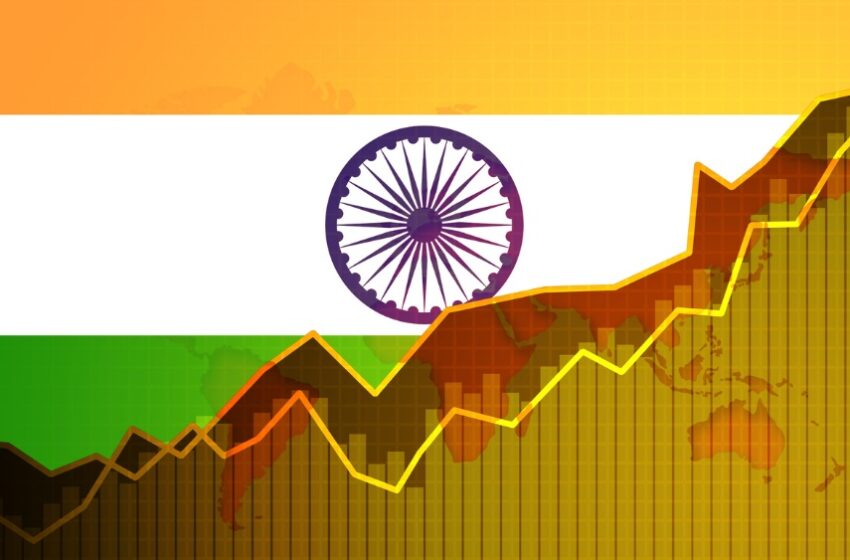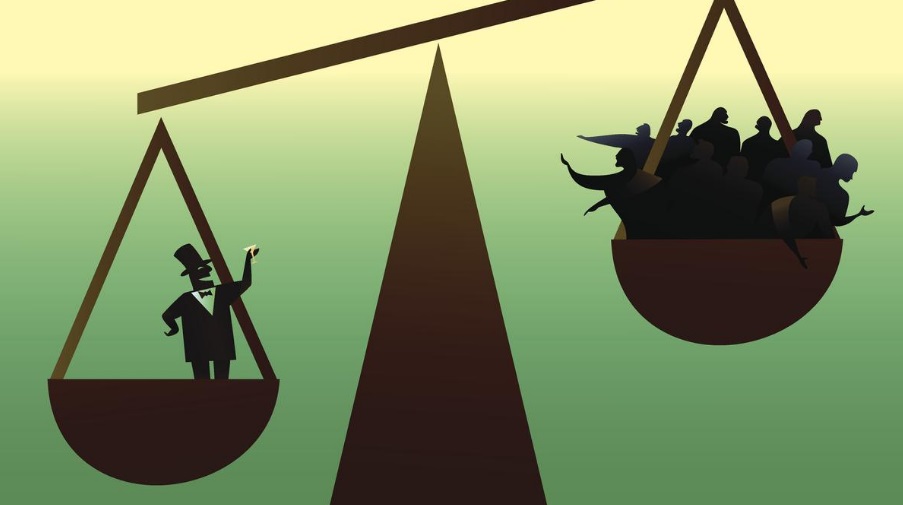
India’s Economic Growth Masks Deepening Inequality: A Closer Look
India must now decide whether it wants to be a rich economy with poor people ‒ or a prosperous nation where progress belongs to all, writes Dr Vikas Singh
In the humming tech corridors of Hyderabad and the crowded alleys of Benaras, two Indias jostle for space. One speaks the language of unicorns, private equity, and digital payments. The other is still tethered to subsistence farming, informal jobs, and fragile health systems. Together, they constitute an economic paradox: a nation that has raced to become the world’s fourth-largest economy, and yet over 60 per cent of its citizens earn less than USD 5,000 a year.
Earlier this year India surged past Japan in GDP rankings, a symbolic milestone in its long march toward great-power status. It is poised to overtake Germany by 2027. But the celebration is tempered by a sobering statistic: per capita income lingers at just $3,800, barely a quarter of China’s. Germany’s per capita stands at USD 5,500. This is not merely a gap in wealth but in opportunity, dignity, and future potential. India may be rising, but millions remain on the ground.
The government trumpets growth figures, stock indices soar, and global CEOs hail India as the next engine of the world economy. But a closer look reveals an unsettling question: is this growth lifting all boats ‒ or just a few luxury yachts?
Demography’s Ticking Clock; The Two-lane Highway of Consumption
India’s median age of 28 presents a powerful “youth bulge,” a potential demographic dividend. However, this opportunity isn’t guaranteed. Without substantial investment in quality education, healthcare, and job creation, this advantage could transform into a crisis. With only two decades before its working-age population peaks, India faces a critical challenge: ensuring growth is inclusive and sustainable. Underfunded education, patchy skilling, and under-resourced healthcare, especially in rural areas, threaten this prospect. Even as the digital economy flourishes, low female labour force participation and limited formal employment mean this new wealth isn’t necessarily translating into widespread livelihoods.
Our formidable consumption, driving 65 per cent of GDP, operates on starkly unequal tracks. A tiny elite enjoys purchasing power akin to Bahrain, while a larger segment mirror developed nations. However, the bottom 50 per cent face
conditions comparable to sub-Saharan Africa. This layering creates a misleading image of middle-class strength, effectively masking widespread economic struggle. While India’s domestic market offers resilience, this top-heavy consumption poses a significant risk to future growth, potentially becoming a critical vulnerability. For India to achieve its $30 trillion ambition by 2047, broad-based purchasing power, extending robustly into rural areas, is essential and cannot be merely assumed.
Concrete Promises
India is building, and fast. Highways stretch wider, railways modernise, ports expand, and digital infrastructure now connects even remote corners. The Unified Payments Interface (UPI) processes more transactions than the rest of the world combined. Production-linked incentives (PLIs) have brought in over USD 40 billion in investment since 2020. These efforts, notably PMJDY’s millions of accounts, highlight the government’s commitment to foundational financial inclusion.
Infrastructure, long India’s Achilles’ heel, is now its most visible symbol of progress. But its reach is unequal. Most of the concrete flows to megacities. Connectivity is meaningless without inclusion. Roads to ‘nowhere’ do not create prosperity. Unless rural India is on board, the infrastructure boom risks becoming a fast train with few passengers.

Reform Interrupted
The economic rise is significantly hindered by deep-seated vulnerabilities. Agriculture, employing over half the population but contributing only 16 per cent to GDP, remains underdeveloped, plagued by under-mechanisation, water scarcity, and political sensitivities. The 2020 farm reforms, aimed at market liberalisation, were controversially repealed after protests, demonstrating resistance to vital structural changes.
Beyond farming, the critical MSMEs, employing 60 per cent of the workforce, struggle with formalisation, limited credit, and the “inspector raj.” A Crux study across 320 districts revealed a 20 per cent competitiveness loss for small businesses due to the regulatory burden. Over 70 per cent of urban infrastructure projects face delays from complex land acquisition. These are fundamental impediments to inclusive prosperity. Compounding these issues, India’s institutions require urgent overhaul; over five crore pending court cases clog the judiciary, while bureaucratic inertia continues to stall timely decision-making and reform.
A Blueprint for Belonging
To evolve into a developed nation, India must abandon the “trickle-down” economic fantasy and instead proactively engineer broad-based growth. This necessitates a bold agenda beginning with substantial human capital investment. Increasing education spending from 4.6 per cent to six per cent of GDP and healthcare from 1.8 per cent to three per cent is crucial; the McKinsey Global Institute estimates this could boost annual GDP growth by 0.2 percentage points, with the Crux study is even more optimistic at 0.4 percentage points. The Crux study further emphasises that closing the gender gap in employment and entrepreneurship could boost India’s GDP by over 20 per cent.
Furthermore, genuine trust is essential for critical reforms; agricultural liberalisation and labour market flexibility require meaningful stakeholder consultation and robust social safety nets. Concurrently, unprecedented reskilling is vital as AI threatens 20-30 per cent of jobs. Without massive upskilling (building on PMKVY), the digital dividend risks becoming a digital divide. Finally, fixing institutions is paramount, demanding stronger political will and efficient implementation to overcome judicial backlogs and governance shortcomings.
The Final Ascent: Climbing Together
India’s economic ascent is real. But unless the ladders of opportunity are extended to those at the bottom, the climb will remain precarious. The GDP growth rate is no longer enough. What matters is who participating in that growth and who is left behind.
A USD 5 trillion or USD 30 trillion economy may dazzle diplomats and excite investors, but unless it provides secure jobs, quality education, decent healthcare, and dignity to its citizens, it risks becoming a hollow triumph. The true test of a developed nation is not in skyscrapers or unicorns, but in schoolrooms, buzzing factories, and village clinics. India must now decide whether it wants to be a rich economy with poor people, or a prosperous nation where progress belongs to all.



